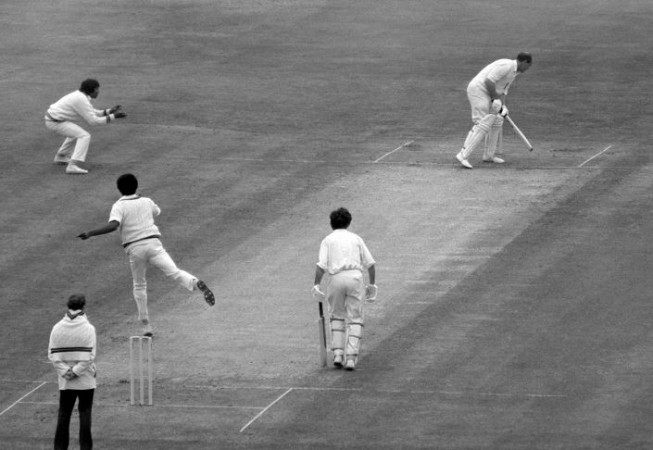
Cricket, a sport renowned for its rich heritage and tradition, has witnessed a remarkable evolution in its formats over the years. From the timeless battles of Test cricket to the fast-paced excitement of Twenty20 (T20) matches, the sport has adapted to cater to changing audience preferences, technological advancements, and the demands of a globalized world. Let's delve into the year-by-year progression of cricket formats, highlighting the key milestones that have shaped the game's landscape.
1877-1900: The Birth of Test Cricket
In 1877, the inaugural Test match took place between England and Australia at the Melbourne Cricket Ground. This marked the birth of Test cricket, the longest and most traditional format of the game. Matches were played over five days, allowing teams to have two innings each to score runs and dismiss the opposing team. During this period, Test cricket established itself as the pinnacle of the sport, emphasizing strategic battles, patient batting, and skillful bowling.
1963: Limited-Overs Cricket is Born
Recognizing the need for a shorter and more spectator-friendly version of the game, cricket introduced limited-overs matches in 1963. The concept originated in England with the Gillette Cup, a knockout competition featuring 65-overs-per-side matches. The introduction of limited-overs cricket aimed to inject excitement and attract larger crowds to the sport.
1971: The Birth of One-Day Internationals (ODIs)
The first One-Day International (ODI) took place on 5th January 1971, when Australia faced England at the Melbourne Cricket Ground. ODIs were limited to 60 overs per side, offering a condensed version of the game completed in a single day. This format introduced time constraints, encouraging more aggressive batting and dynamic fielding strategies. The inaugural Cricket World Cup was held in 1975, cementing the popularity of ODIs on the global stage.
2003: The Advent of Twenty20 (T20) Cricket
In 2003, the England and Wales Cricket Board (ECB) introduced a revolutionary format known as Twenty20 cricket. Matches were limited to 20 overs per side, aiming to provide a more fast-paced, spectator-friendly experience. The first professional T20 competition, the English Twenty20 Cup, commenced in 2003, capturing the imagination of fans with its explosive batting, strategic bowling, and nail-biting finishes.
2007: The Rise of the Indian Premier League (IPL)
The Indian Premier League (IPL), established in 2007, marked a watershed moment in cricket's evolution. The IPL brought together the world's top players, combining cricketing prowess with entertainment and glamour. The league's franchise-based model, featuring high-intensity T20 matches, drew huge crowds, television viewership, and commercial investments, revolutionizing the way cricket was perceived and consumed globally.
2010: The Introduction of Day-Night Test Cricket
Cricket administrators sought to rejuvenate the traditional Test format by introducing day-night Test matches. In 2010, the first day-night Test took place between Australia and New Zealand at the Adelaide Oval. These matches are played with a pink ball under floodlights, allowing spectators to attend matches after working hours and revitalizing Test cricket's appeal by combining tradition with innovation.
2020: The Rise of Franchise T20 Leagues
The success of the IPL sparked the creation of several franchise-based T20 leagues worldwide. The Big Bash League (BBL) in Australia, the Caribbean Premier League (CPL), the Pakistan Super League (PSL), and the Bangladesh Premier League (BPL) are some prominent examples. These leagues brought together international stars, local talents, and passionate fan bases, further promoting the popularity and commercial viability of T20 cricket.
Technological Advancements and Cricket's Evolution
Alongside format changes, cricket has embraced technological advancements to enhance the game. Innovations like Decision Review System (DRS), ball-tracking technology (Hawk-Eye), and Snickometer have improved umpiring decisions, ensuring greater accuracy and fairness. These technological advancements have added an extra layer of excitement and analysis for players, spectators, and broadcasters.
In conclusion, cricket's journey from Test to T20 formats has been marked by significant milestones and transformations. The evolution from timeless Test matches to fast-paced limited-overs cricket and the subsequent introduction of T20 leagues have expanded the sport's global reach, attracted new audiences, and showcased the adaptability of cricket to meet changing demands. While Test cricket remains the ultimate test of skill and endurance, T20 cricket has added an element of thrill and entertainment, making cricket a truly versatile and captivating sport in the modern era.
Ravichandran Ashwin Makes History by Dismissing Father and Son in Test Match
Major League Cricket Set to Kick Off Inaugural Tournament
India and Pakistan Set to Clash in ACC Men's Emerging Asia Cup on July 19